It’s possible to make it easier for kids to eat the food we offer them simply by making sure it’s cut into appropriate sizes. This can help reduce frustration, picky eating, and food waste—and the potential for choking risks. This post has all of my best tips for how to cut food for babies and toddlers!
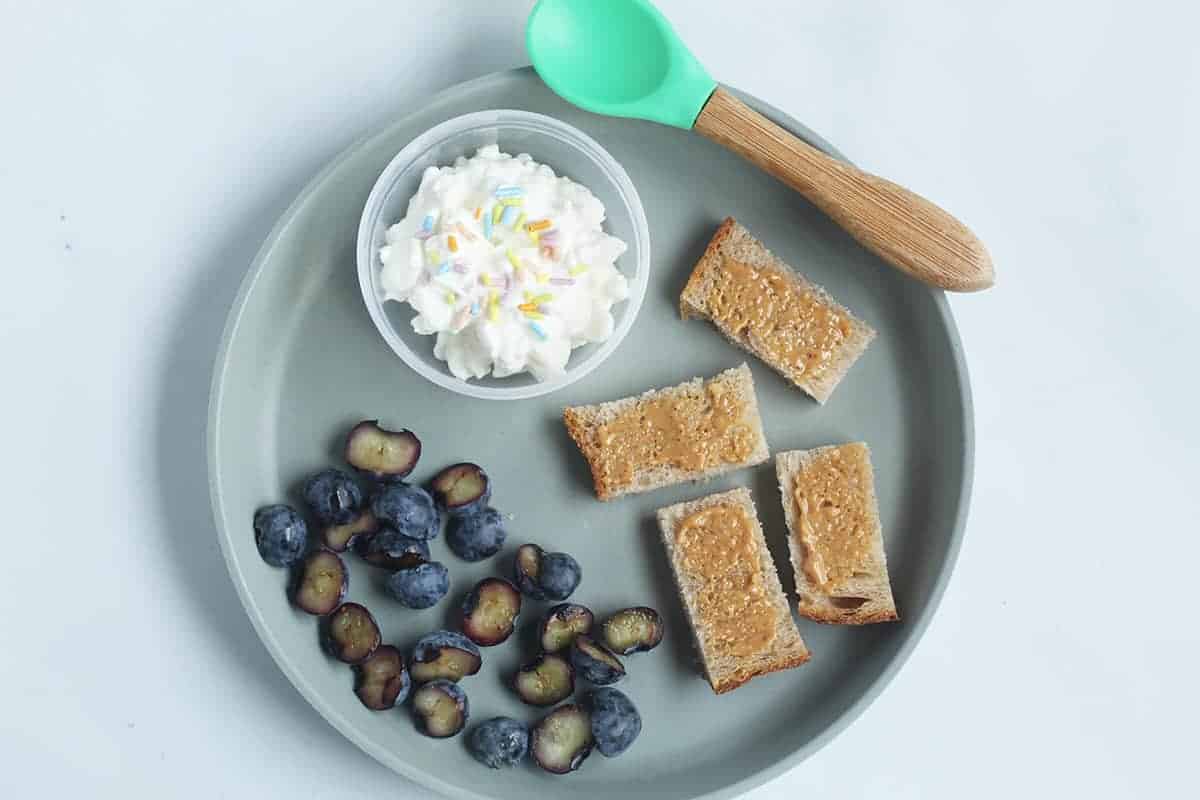
How to Cut Food for Babies and Toddlers
Food can be slippery and hard to pick up. It can be chewy, tough, sticky, or a whole host of other textures. It can help to greatly reduce frustration at mealtimes if you consider a few basic tips when cutting food for kids. The principals of this are really straight forward, but I’m going to share a lot of visuals since I know the real life practice of this can get confusing!
How to cut food for little kids changes as they progress through the stages of learning to eat, so remember that this is a process.
Table of Contents
- How to Cut Food for Babies and Toddlers
- How to Cut Food for Baby Led Weaning
- Tips for Cutting Up Finger Foods for Babies
- How to Serve Raw Veggies to Toddlers
- How to Cut Sandwiches for Kids
- How to Serve Apples to Babies and Toddlers
- How to Serve Bananas to Babies and Toddlers
- How to Serve Broccoli to Babies and Toddlers
- How to Help Kids Learn to Take Bites
- Best Tips for Cutting Food for Kids
Your toddler won’t eat? Help is here!
Sign up for our email updates to get tips and ideas sent to your inbox.
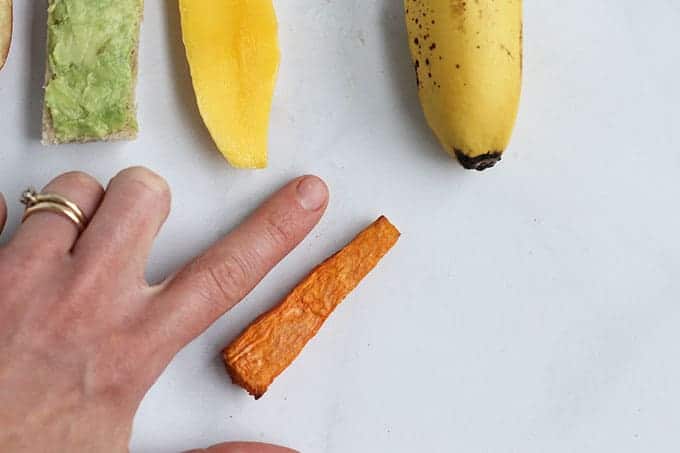
How to Cut Food for Baby Led Weaning
If you’re starting solids with the Baby Led Weaning style, you’ll want to make sure that the food is soft (it should easily squish between your fingers) and be cut at least the size of your finger. This will help ensure that baby can easily pick it up, yet be unable to put the entire piece into her mouth.
TIP: Find my Ultimate Guide to Baby Led Weaning here.
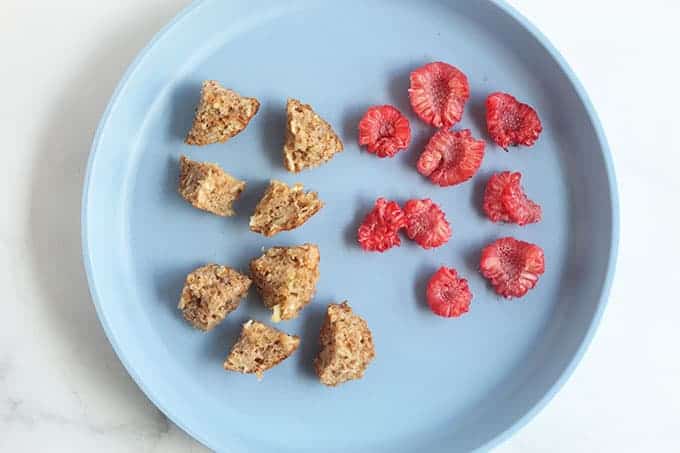
Tips for Cutting Up Finger Foods for Babies
When babies are about 9 months old, they develop the “pincer grasp”, or the ability to pick up smaller pieces between two fingers. At this age, you can start to serve very soft, squishable finger foods that are about the size of a pea or two.
TIP: Find my full list of Early Finger Foods for Babies here.
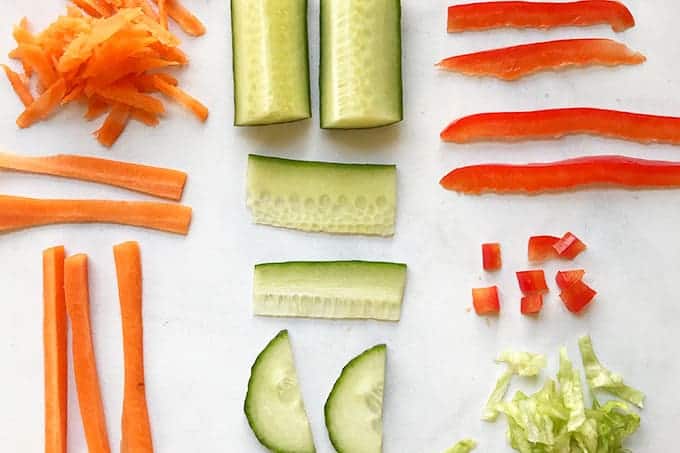
How to Serve Raw Veggies to Toddlers
Offering raw veggies to kids can be challenging since many are hard and take a lot of work to chew. And big chunks of raw veggies like carrots can be choking hazards. To stay safe and give the kids a chance to practice with the new textures, try:
- 12/14 months: Start with shredded raw veggies like carrots, cucumbers, bell pepper, and lettuce. (You can soften the carrots for a few minutes in very hot water if desired.)
- 16/18 months: Proceed to very, very thin slices (paper thin!).
- 20/24 months: Gradually offer slightly thicker pieces around, but they should still be thin and less than 1/4-inch thick.
- 2 years: Try offering small diced pieces of bell pepper and cucumber, though some kids may still do better with larger, thin pieces.
- 4+ years: Kids may be able to safely chew a big piece of raw carrot or a whole baby carrot. (This is a really tough texture, so try to avoid it for a while.)
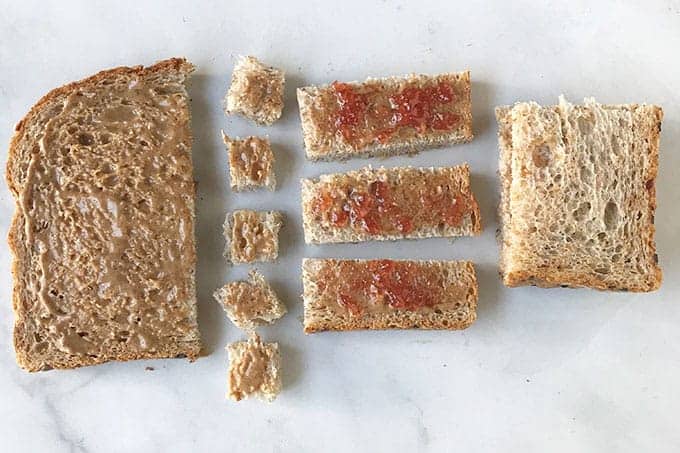
How to Cut Sandwiches for Kids
Bread can be a challenging texture for kids, especially when there are other textures in the middle of a sandwich. Progressing through a few phases can make this easier and help avoid frustration.
- 6+ month: Serve lightly toasted finger-size or larger pieces of bread for baby to gnaw on.
- 9+ months: Dice bread into very small pieces. Moisten it with apple butter, baby food puree, or another moist spread as needed to help baby move it around in their mouths.
- 14/16 months: Stick pieces are great for this age to help kids practice taking bites.
- 20/22 months: Sandwich quarters are a great size for one year olds and are a nice size for little hands to hold.
TIP: Find my favorite Kid’s Sandwiches here.
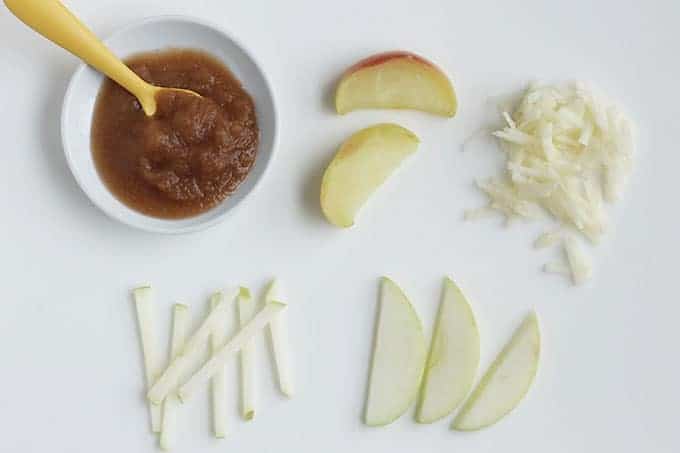
How to Serve Apples to Babies and Toddlers
Start with applesauce and Roasted Apples for babies, then shredded apple to thin matchsticks to very thin slices through the one year old year.
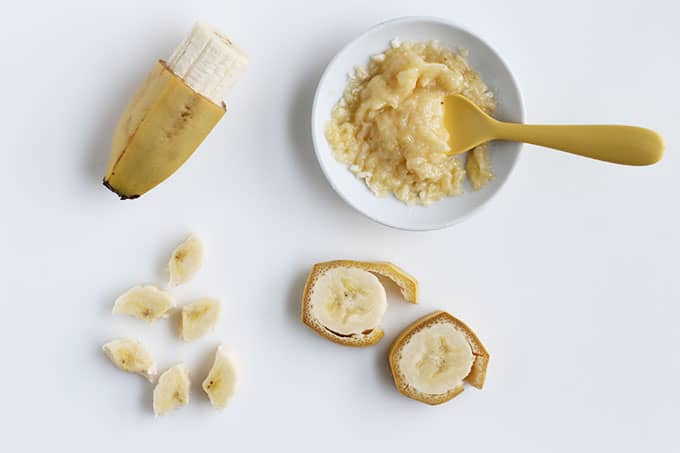
How to Serve Bananas to Babies and Toddlers
Start with a BLW-style banana (leave a little of the skin on to act as a less slippery handle) and Banana Puree, then move to small pieces around 9 months, and larger pieces around 16 months. Kids may also be able to bite whole bananas after 12 months since they are so soft.
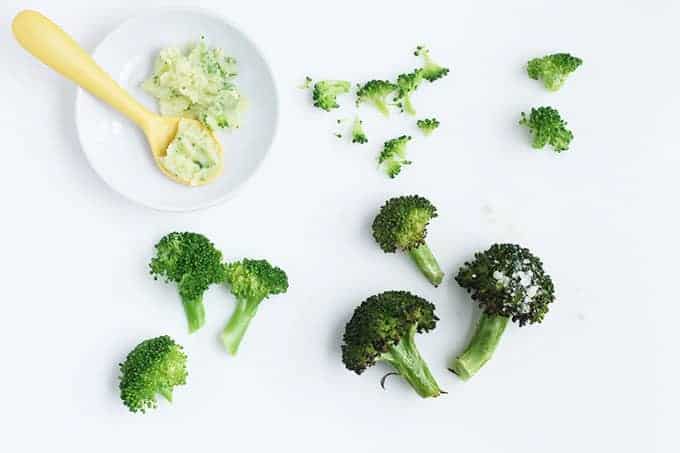
How to Serve Broccoli to Babies and Toddlers
Start with Mashed Potatoes with Broccoli or a big BLW-style piece, then move to smaller very tender pieces around 9 months, and gradually increase the size through the one year old year.
With all of these, you want the florets to be very soft so they are easy to chew.
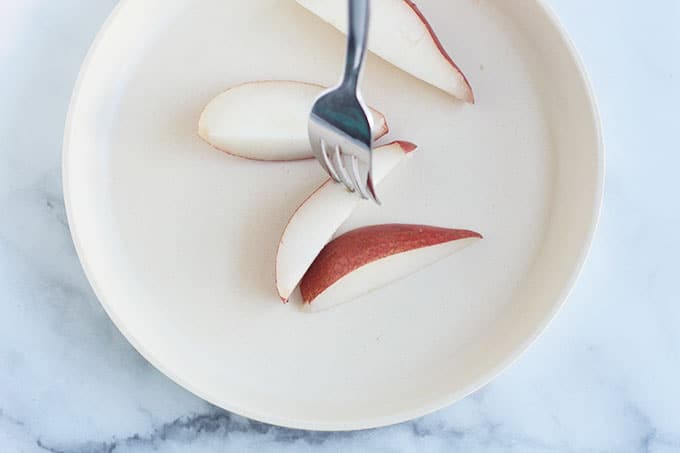
How to Help Kids Learn to Take Bites
It’s common for one year olds to stuff a lot of food into their mouths at once, so we sometimes need to be very deliberate about teaching them to take bites. You can use a fork to make a “bite mark” so they can see where to try to put their teeth. You can also give them larger pieces of food that they physically wouldn’t be able to fit into their mouths so they sort of have to take a bite.
Sit with the kids during meals, if you can, and show them how you take bites. This is a normal phase and kids usually get the hang of it if we give them time to learn and practice.
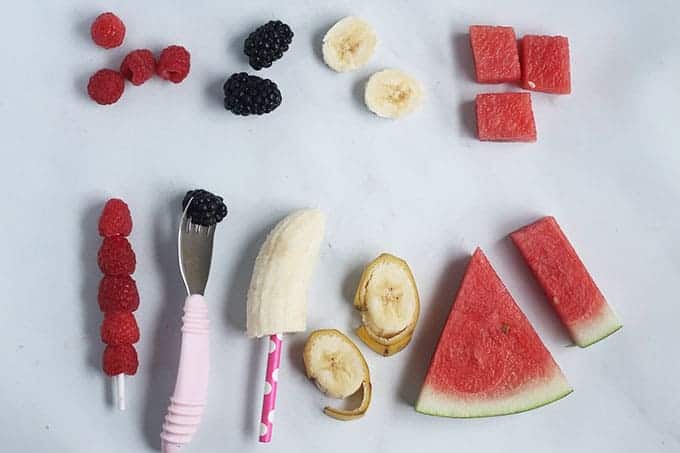
Best Tips for Cutting Food for Kids
- Start with finger-size pieces at 6+ months for baby led weaning.
- Transition to pea (or two peas) size pieces around 9 months when kids can pick up smaller pieces between their fingers.
- Offer larger pieces so they can practice taking bites around 16/18 months.
- For raw veggies and hard fruits (like apples), start with shreds, then matchsticks, and paper thin pieces.
- Save baby carrots and other very hard raw veggies until age 4+.
- Find my favorite baby First Finger Foods.
- Find my go-to toddler Finger Foods.
- Learn more about Serving Nuts to Kids.
- Brush up on the common choking hazards and how to reduce the risk.
Related Recipes
I’d love to know if you have any questions on this or feedback, so please comment below!
This post was first published March 2021.
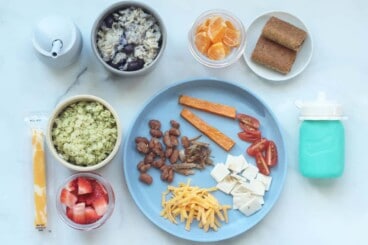
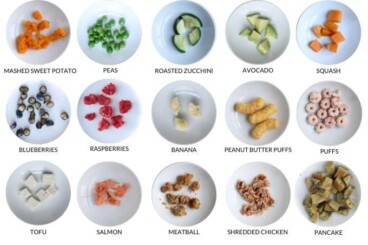
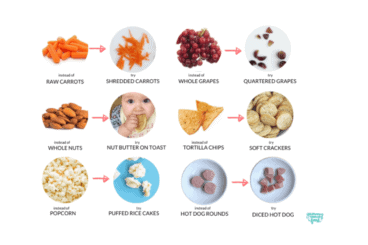
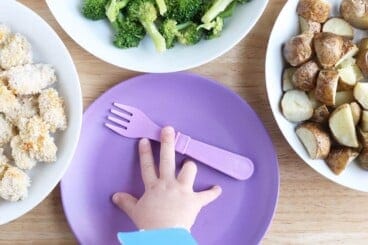
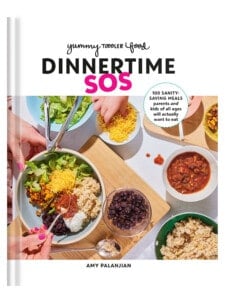
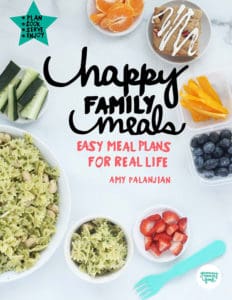

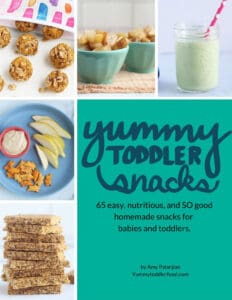















First off, thank you sooo much for this! It makes something so daunting (safely feeding my child) a little less scarier. I do have a question though. My son is 13 months and I’ve missed introducing some of these foods to him. For instance breads. Should I start with the first step that would be appropriate since it’s new to him despite his age? Thank you again!
Hi- You sure can and then see how it goes and go from there.
Hi, my daughter is 7 months old, and I have been feeding her homemade pureed foods. I have a really big fear of her choking, but she clearly wants to use her hands because she tries to grab at it. Despite my fears, I have let her try age-appropriate finger foods, such as lightly toasted finger size toast fingers. Although she enjoys using her hands, what often happens is a piece that is too big for her will break off in her mouth. So that is my question: giving babies big pieces to hold onto is great, but what about when they break off a piece that can block their airway? I read that their windpipe is the size of a straw at this age, so anything that could plug a straw could plug their airway. It makes me scared to give her anything big enough to plug a straw.
Hi- Two things you can try. Let her take the spoon and feed herself purees (with texture if you can)—like you put the food on the spoon and then allow her to take it from her and put it into her mouth on her own. That is a great way to let her use her hands and take more ownership of feeding herself. Then with the larger pieces, you can do things that smush lightly between your fingers to reduce your worry such as roasted sweet potato, avocado, pieces of egg, tofu, avocado. You are right that they can and often do bite off a big piece, and most often what happens is that they spit it back out. But using softer foods may allow her to explore.
Great visuals and information! Thank you!